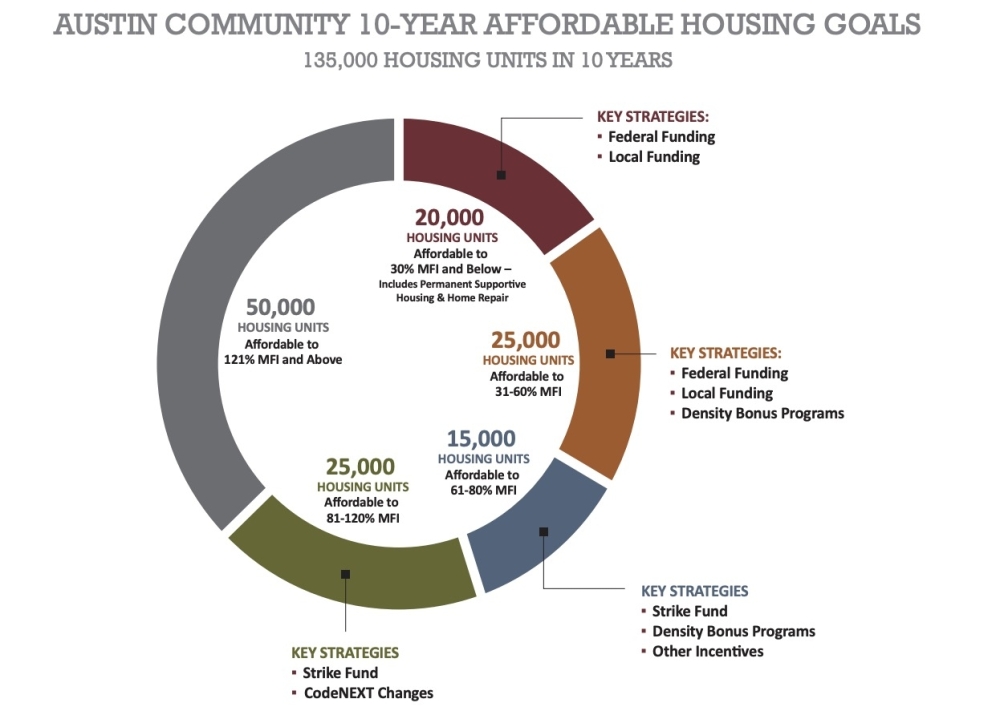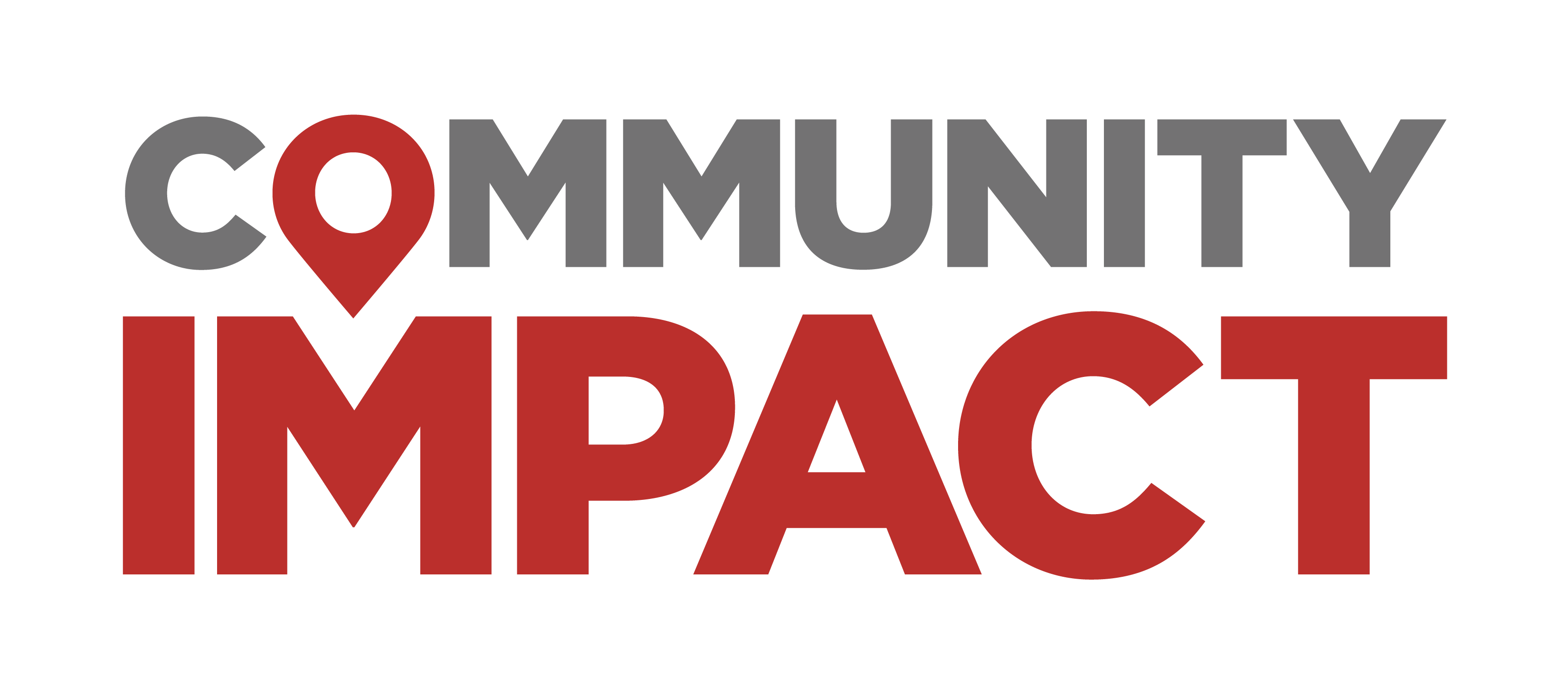“We’ve been very focused on a number of land use reforms that I believe have spurred us along in the effort to create more affordable homes, but very clearly there is still a very significant gap to meet the needs that we have in our city," Mayor Pro Tem Vanessa Fuentes said in an interview. "We want to ensure that we are building affordable homes in all parts of Austin, and when we build these affordable homes in all parts of our city, everyone wins."
The big picture
Austin officials moved to implement the housing blueprint back in 2017, with decade-long goals to add 60,000 income-restricted units and 75,000 more for middle- and higher-income residents.
Reaching those marks would involve both private development and affordable housing additions with a mix of public funding. The city previously estimated $6 billion-$11 billion would be needed to help build the 60,000 units for lower-income Austinites by 2028.

By the numbers
New reporting points to 2023 being the most productive year for local affordable housing development so far, with almost 5,000 new units created for residents earning 80% MFI and below in that year alone. Middle- and higher-income housing production was generally on target, with HousingWorks' latest report noting that construction was taking place "just around the pace" needed to meet Austin's decade-long goals.
Housing availability has also changed over the years as incomes in the Austin region have jumped. The 80% MFI limit typically used as the cutoff for "affordable" housing rose by about $40,000 for a four-person household, or 60%, between the blueprint's adoption in 2017 and today.
HousingWorks Executive Director Awais Azhar also noted "filtering" in the market as units previously priced at market rates may have fallen to a lower income level, although he said it remains to be seen if such changes hold through future years.
"The conversation that we’re hearing nationally and locally about our market cooling down, us actually having more relatively affordable housing in the rental space, that 60%-80% MFI, that’s true," he said.
Most recent additions have come at the higher end of the affordability scale. Despite goals to produce thousands of spaces for a range of extremely low-income residents, only a handful—just over 400 units—were added for people earning 30% MFI or less, which Fuentes pointed to as a critical need going forward. The community was also off the mark for new permanent supportive housing, or PSH, for tenants exiting homelessness as of 2023, although hundreds of units have since opened or are now in development.
Zooming inWhile total affordable housing gains are behind the blueprint's 10-year pace, East Austin continues to see far more additions than communities elsewhere in the city.
City Council districts 1, 2, 3 and 4, which cover most of Austin east of I-35, were all roughly on track or ahead of their six-year benchmarks. District 2 was over 80% to its blueprint goal and had nearly 2,500 more units still on the way in 2023, progress that would put that area well ahead of the rest of the city relative to its blueprint objectives.
Fuentes credited new construction from recent housing bonds and other city programs for the progress made in her District 2.
"We’re going to have two affordable home projects in our district being built including affordable apartment homes as well as the city’s largest community land trust," she said. "That really speaks to the affordable housing bonds that voters have approved, that speaks to our city’s commitment in prioritizing affordable housing and everything that we do with our programs and services, as well as I championed a number of displacement prevention measures.”On the other hand, central and western council districts remained well behind the targets set in 2017, a trend that's persisted over the past several years. Those areas also have far less affordable housing development activity now taking place.
In District 2, more income-restricted housing was under construction than in council districts 5, 6, 7, 8, 9 and 10 combined. West Austin's District 10, which had the second-highest goal set back in 2017, added only 72 affordable units and had less than 200 more in progress as of 2023.
"We see that wall that’s west of MoPac remain a continuous challenge," Azhar said. "I will say in District 6 we’re doing way better, District 8 we’re doing fine. ... District 10 really continues to stand out as a little bit of a challenge there.”
What's next
The Austin real estate market isn't the same as when the housing blueprint was adopted, with rising home prices and rents coming alongside rapid population growth. Given those changes and others in the local market, the city will be updating the blueprint through a project supported by a nearly $7 million federal planning grant.
"Whatever assumptions we had about the housing market, whatever baseline data we had [for] the housing market in 2017, it honestly just does not even match reality anymore. We’re in a very different environment. And then you add in the recessionary effects that we’ve seen this year," Azhar said.
City officials will hear more about that process at an upcoming session of City Council's Housing and Planning Committee after the April release of 2023 data from the city and HousingWorks.
Fuentes also said Austin will need to continue making local investments in its housing goals as bond dollars quickly dry up, and with little aid expected from higher levels of government.
"I’m deeply concerned about what’s happening at the federal level and potential funding cuts that we could get to already-scarce and scant federal dollars that we have going towards affordable housing. And certainly, the state has lacked any significant commitment to affordable housing," she said. "It really strains us here at the local level when we don’t have the support needed. ... I really would want to ensure that all parts of our city has their fair share of affordable housing opportunities so that regardless of what ZIP code you live in, you have those options.”





